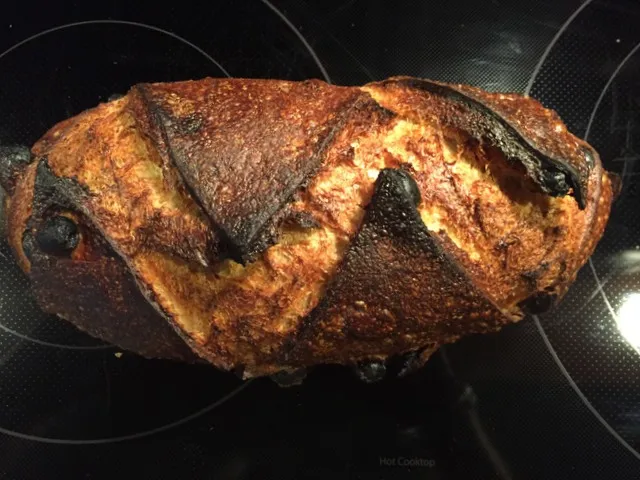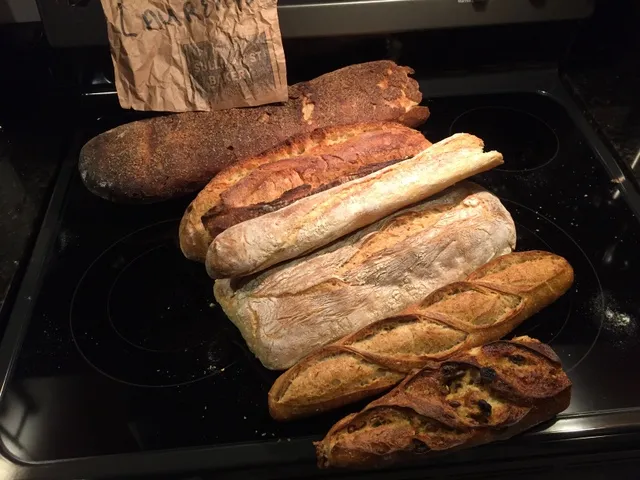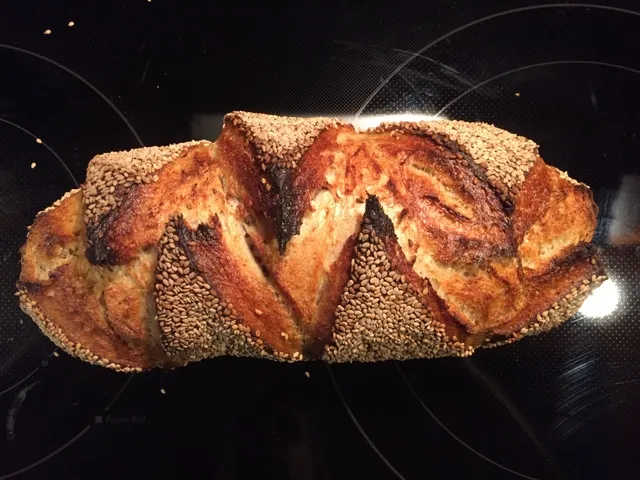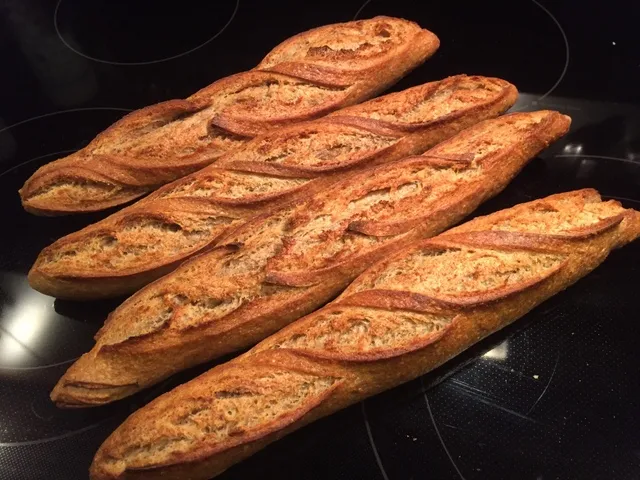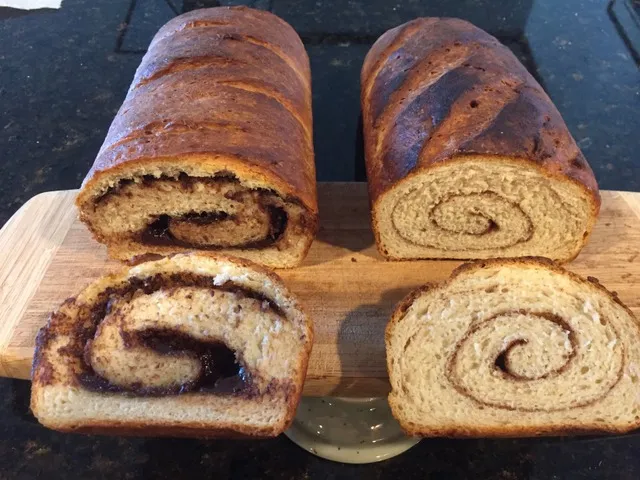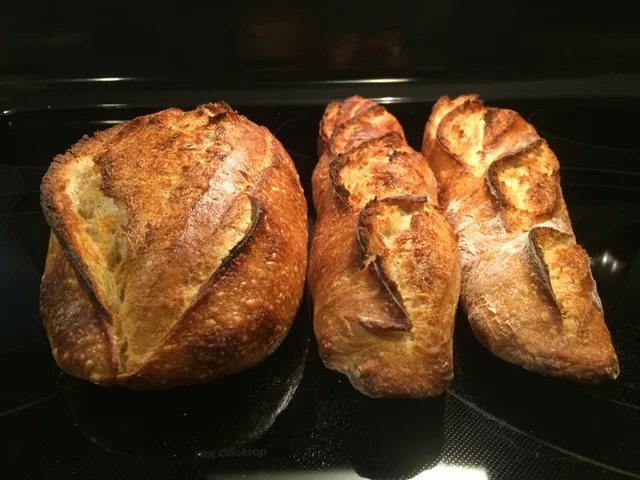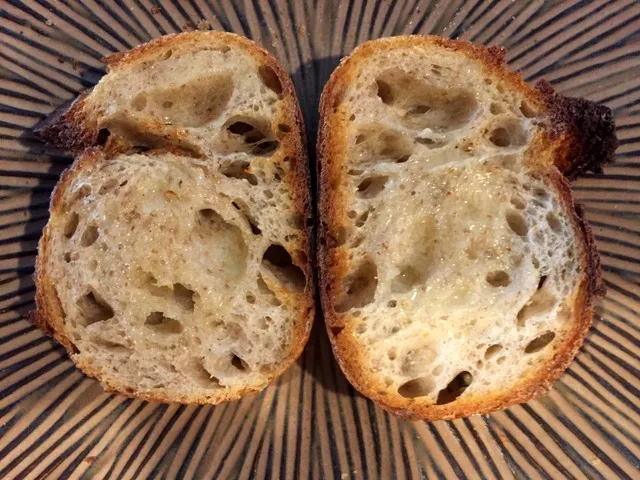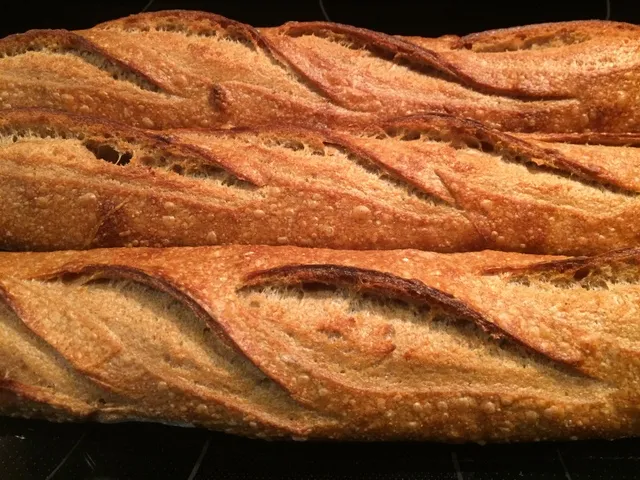Playing with my food
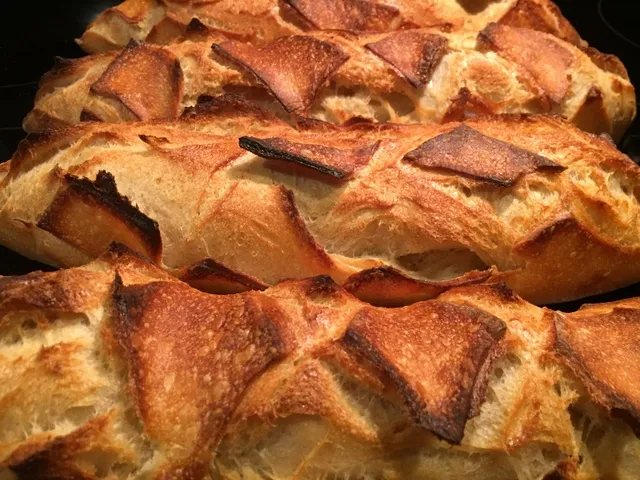
Another batch of Vermont SD, ho-hum. However this time I decided to score these differently as well as some pre-shaping changes and a more gentle final shaping. Which I'll attribute to the shorter and slightly stubbier look of these
In the spirit of Abel's Ziggy scoring, which I've done few times now - I decided to try a cross cut, "x's" all down the length of the dough. And wound up with two distinct looks.

